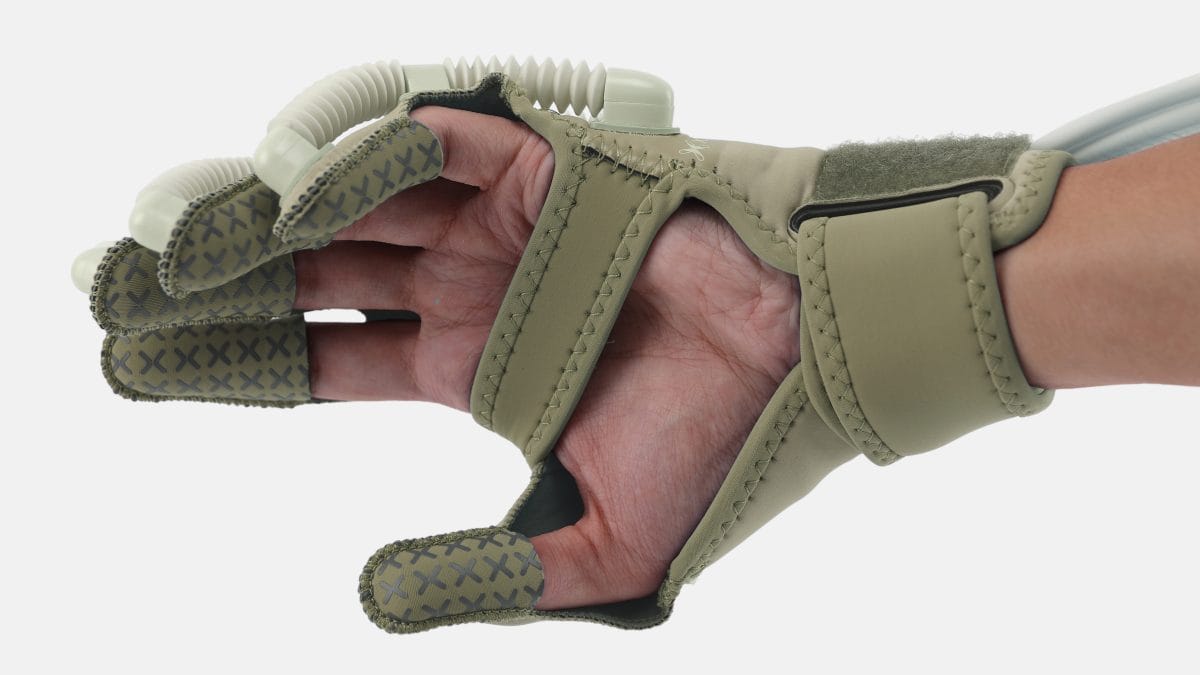Hand Rehabilitation Device
XFT Medical partnered with IDC once again to produce their latest device, the Hand Rehabilitation Glove. XFT Medical develops and manufactures home medical & rehabilitation devices. The long-standing relationship between XFT and IDC has seen a wide range of products brought to the market.
The rehabilitation robotic glove is a training device that combines EMG electromyographic feedback and flexible robotics for patients with stroke or hand disabilities to train and repair dexterity.
Trains and Repairs
The glove uses flexible air-activated muscles to aid movement. Using the device patients carry out passive rehabilitation training, through pre-set training programs. The glove trains and repairs the patient’s limb motor function and prevents muscle disuse atrophy.
The product has three components: the glove, armband and control unit. IDC created a brand identity across the three devices which also fits in line with the rest of XFT Home medical range.
EMG Armband
Using the EMG armband, the product features innovative mirror technology. This is where the unaffected hand drives the other to action synchronously. The devices measure the intensity or EMG signals via the armband. These signals trigger the glove to activate and mirror the movements. This promotes the autonomic recovery of the brain and speeds up the rehabilitation process.
Empathetic Design Process
IDC followed an empathetic design process to understand the specific requirements of the users. Many of them are suffering from symptoms that reduce dexterity and may not have a carer present to help them use the product. One requirement identified was that device needs to be easy to put on using only one hand. This resulted in the cut-out palm area with fingertip hoods and a supporting wrist strap. Testing was conducted to find the optimum balance between ease of use and effective treatment.
Neoprene – Best Material
Initially, the IDC team tested existing gloves on the market to evaluate fitment, comfort and materials. This process allowed the team to understand the glove’s construction and quickly model ideas by modifying them. Neoprene was selected as the best material for the glove due to its cleanability, strength, and comfort.
Sketch models were created to validate ideas further, which were then tested on users. From the user testing, it was found that often the patients had weak wrists making it hard to complete the training. Therefore, a wrist strap was incorporated into the design to add support to the wrist which helped create a more effective treatment and improved the usability.
Competitor research found some key issues with the existing offerings, with bulky solutions that didn’t give enough flexibility and movement. Using IDC’s in-house prototyping capabilities different solutions were quickly tested and optimized, finding that rounded bellows expand more effectively. Initially, the focus was on a custom integrated below to give the product a sleek, unified look. However, due to manufacturability it was not deemed cost-effective. IDC incorporated proven bellows and engineered better junctions for a cleaner design. There was also a focus on clean and unobtrusive airway management to power the bellows from the control unit..
The rehabilitation glove has six different training modes including power-assisted movement and resistant training to help strengthen the muscles. The user can complete specific training programs for full hand movement, fingertip touch training and single finger training, to promote gross and fine motor skill improvement. The product is available in small, medium, and large sizing’s. The patient can easily change the air pressure in the device to find a strength that suits them.
